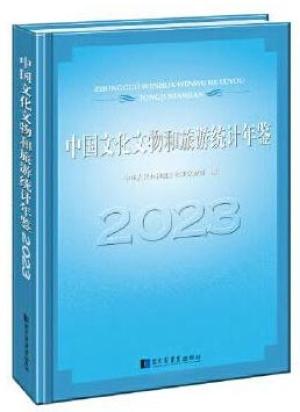新書推薦:

《
中国佛教美学典藏·佛教绘画部·经卷佛画
》
售價:HK$
816.0

《
中国佛教美学典藏·佛教绘画部·石窟壁画
》
售價:HK$
660.0

《
中国佛教美学典藏·佛教绘画部·绢帛佛画
》
售價:HK$
480.0

《
中国色:手艺里的中国色彩美学
》
售價:HK$
105.6

《
中国文化文物和旅游统计年鉴2023
》
售價:HK$
357.6

《
琴学论集:古琴传承与人文生态
》
售價:HK$
165.6

《
天理与秩序:宋代政治伦理思想研究
》
售價:HK$
117.6

《
怎么办?
》
售價:HK$
94.8
|
| 編輯推薦: |
|
“当代国外语言学与应用语言学文库”(升级版)是主要面向高校英语专业高年级本科生、研究生及英语教师的一套大型、开放的系列丛书。本升级版或保留原有经典图书品种,或继之以经典图书的新版,或引进国外语言学与应用语言学领域的新锐力作以进一步拓展学科领域,希望它能继续对我国语言学教学与研究和外语教学与研究起到积极的推动作用。《语义学(第四版)》是“当代国外语言学与应用语言学文库”(升级版)中的一本,本书对当前语义学的发展做了全面的介绍,探讨了语义学的新理论发展,是语义学研究者的参考书之一。
|
| 內容簡介: |
|
《语义学(第四版)》在形式和内容上进行了全面更新,反映了语义学研究领域的新理论发展,如“因果关系”“情境类型分析”“词汇语用学”“构式语法”等方面有大量新增内容。此外,本书每章都配有小结、思考题及答案,方便读者理解原书并作进一步研究。
|
| 關於作者: |
|
约翰·I. 萨伊德(John I. Saeed),爱尔兰圣三一学院语言与交流研究中心副教授,主要研究方向为语义学,著有《语义学》《索马里语》等。
|
| 目錄:
|
|
Figures and Tables xv Preface xvii Abbreviations and Symbols xix Part I Preliminaries 1 1 Semantics in Linguistics 3 1.1 Introduction 3 1.2 Semantics and Semiotics 5 1.3 Three Challenges in Doing Semantics 5 1.4 Meeting the Challenges 7 1.5 Semantics in a Model of Grammar 8 1.6 Some Important Assumptions 10 1.7 Summary 17 1.8 Exercises 17 Further Reading 19 Notes 19 References 20 2 Meaning, Thought, and Reality 22 2.1 Introduction 22 2.2 Reference 24 2.3 Reference as a Theory of Meaning 29 2.4 Mental Representations 31 2.5 Wbrds3 Concepts, and Thinking 37 2.6 Summary 42 Exercises 43 Further Reading 44 Notes 44 References 45 Part II Semantic Description 49 3 Word Meaning 51 3.1 Introduction 51 3.2 Words and Grammatical Categories 52 3.3 Words and Lexical Items 53 3.4 Problems with Pinning Down Word Meaning 56 3.5 Lexical Relations 59 3.5.8 Portion-^mass 67 3.6 Derivational Relations 67 3.7 Lexical Typology 69 3.8 Summary 75 Exercises 76 Further Reading 78 Notes 79 References 80 4 Sentence Relations and Truth 84 4.1 Introduction 84 4.2 Logic and Truth 86 4.3 Necessary Truth, A Priori Truth, and Analyticity 91 4.4 Entailment 94 4.5 Presupposition 97 4.6 Summary 105 Exercises 106 Further Reading 108 Notes 108 References 110 5 Sentence Semantics 1: Situations 112 5.1 Introduction 112 5.2 Classifying Situations 113 5.3 Modality and Evidentiality 134 5.4 Summary 142 Exercises 143 Further Reading 146 Notes 146 References 147 6 Sentence Semantics 2: Participants 149 6.1 Introduction: Classifying Participants 149 6.2 Thematic Roles 150 6.3 Grammatical Relations and Thematic Roles 155 6.4 Verbs and Thematic Role Grids 156 6.5 Problems with Thematic Roles 158 6.6 The Motivation for Identifying Thematic Roles 161 6.7 Causation 164 6.8 Voice 166 6.9 Classifiers and Noun Classes 175 6.10 Summary 178 Exercises 179 Further Reading 182 Notes 182 References 184 7 Context and Inference 189 7.1 Introduction 189 7.2 Deixis 190 7.3 Reference and Context 196 7.4 Knowledge as Context 197 7.5 Information Structure 203 7.6 Inference 208 7.7 Conversational Implicature 210 7.8 Lexical Pragmatics 217 7.9 Summary 219 Exercises 220 Further Reading 224 Notes 224 References 225 8 Functions of Language: Speech as Action 229 8.1 Introduction 229 8.2 Austin5s Speech Act Theory 232 8.3 Categorizing Speech Acts 237 8.4 Indirect Speech Acts 239 8.5 Sentence Types 245 8.6 Summary 247 Exercises 248 Further Reading 250 Notes 250 References 252 Part III Theoretical Approaches 257 9 Meaning Components 259 9.1 Introduction 259 9.2 Lexical Relations in CA 260 9.3 Katz’s Semantic Theory 262 9.4 Grammatical Rules and Semantic Components 265 9.5 Thlmy’s Typology of Motion Events 273 9.6 Jackendoffs Conceptual Structure 278 9.7 Pustejovsky’s Generative Lexicon 287 9.8 Problems with Components of Meaning 294 9.9 Summary 295 Exercises 295 Further Reading 299 Notes 300 References 301 10 Formal Semantics 305 10.1 Introduction 305 10.2 Model-Theoretical Semantics 307 10.3 Translating English into a Logical Metalanguage 308 10.4 The Semantics of the Logical Metalanguage 315 10.5 Checking the Truth-Value of Sentences 317 10.6 Word Meaning: Meaning Postulates 321 10.7 Natural Language Quantifiers and Higher-Order Logic 323 10.8 Intensionality 331 10.9 Dynamic Approaches to Discourse 336 10.10 Summary 344 Exercises 345 Further Reading 348 Notes 348 References 350 11 Cognitive Semantics 353 11.1 Introduction 353 11.2 Categorization 356 11.3 Polysemy 363 11.4 Metaphor 369 11.5 Metonymy 376 11.6 Mental Spaces 377 11.7 Langacker’s Cognitive Grammar 388 11.8 Construction Grammar 392 11.9 Summary 394 Exercises 395 Further Reading 398 Notes 398 References 400 Solutions to Exercises 405 Glossary 435 Index 458
|
|









